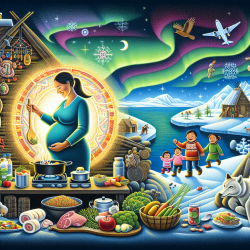The Critical Role of Inuit Country Food in Child Development
Inuit communities in the Circumpolar North have undergone significant nutritional changes, transitioning from nutrient-rich traditional foods to market foods, raising concerns about diet quality and chronic diseases. A recent scoping review titled "Inuit Country Food and Health during Pregnancy and Early Childhood in the Circumpolar North" highlights the importance of traditional Inuit foods in pregnancy and early childhood, emphasizing their role in supporting optimal health outcomes.
Key Findings from the Scoping Review
The scoping review, which systematically mapped literature published between 1995 and 2019, reveals several key insights:
- Environmental Contaminants: Over half of the articles involving pregnant women focused on environmental contaminants, underscoring the need for balancing the risks and benefits of traditional food consumption.
- Nutrient Adequacy: Despite the prevalence of nutrient deficiencies in Inuit communities, only a quarter of the research focused on nutrient adequacy, highlighting a gap in addressing these critical public health concerns.
- Food Security: Food insecurity remains a significant issue, with only a small percentage of research addressing this theme, despite its strong association with poor health outcomes.
- Research Methods: Most studies utilized quantitative methods, with limited engagement of qualitative approaches that align with Inuit knowledge-sharing practices.
Implications for Practitioners
For practitioners working with Inuit communities, understanding the role of traditional foods in promoting health during pregnancy and early childhood is crucial. Here are some actionable steps:
- Promote Traditional Foods: Encourage the consumption of traditional Inuit foods rich in essential nutrients like protein, iron, zinc, and vitamins A, D, and B12.
- Address Food Security: Collaborate with community leaders to develop strategies that enhance food security, ensuring that families have consistent access to nutrient-rich traditional foods.
- Engage in Community-Based Research: Utilize qualitative research methods to gain insights into community perspectives and incorporate Inuit knowledge in developing culturally relevant interventions.
Encouraging Further Research
The review identifies several gaps in the current literature, such as the interaction of environmental contaminants and nutrients, and the barriers to accessing traditional foods. Practitioners are encouraged to engage in further research to fill these gaps and support the development of informed public health policies that cater to the unique needs of Inuit communities.
To read the original research paper, please follow this link: Inuit Country Food and Health during Pregnancy and Early Childhood in the Circumpolar North: A Scoping Review.










